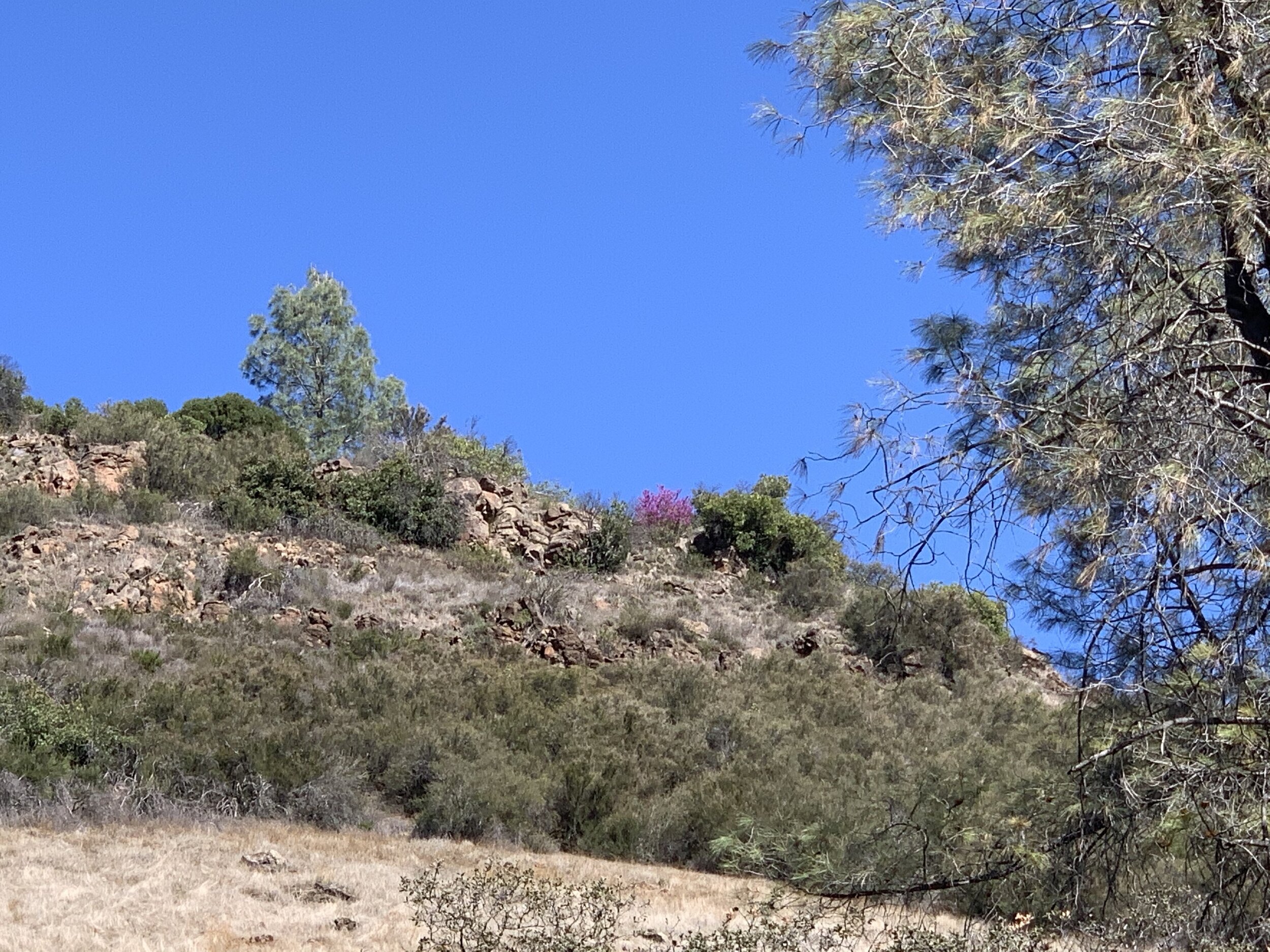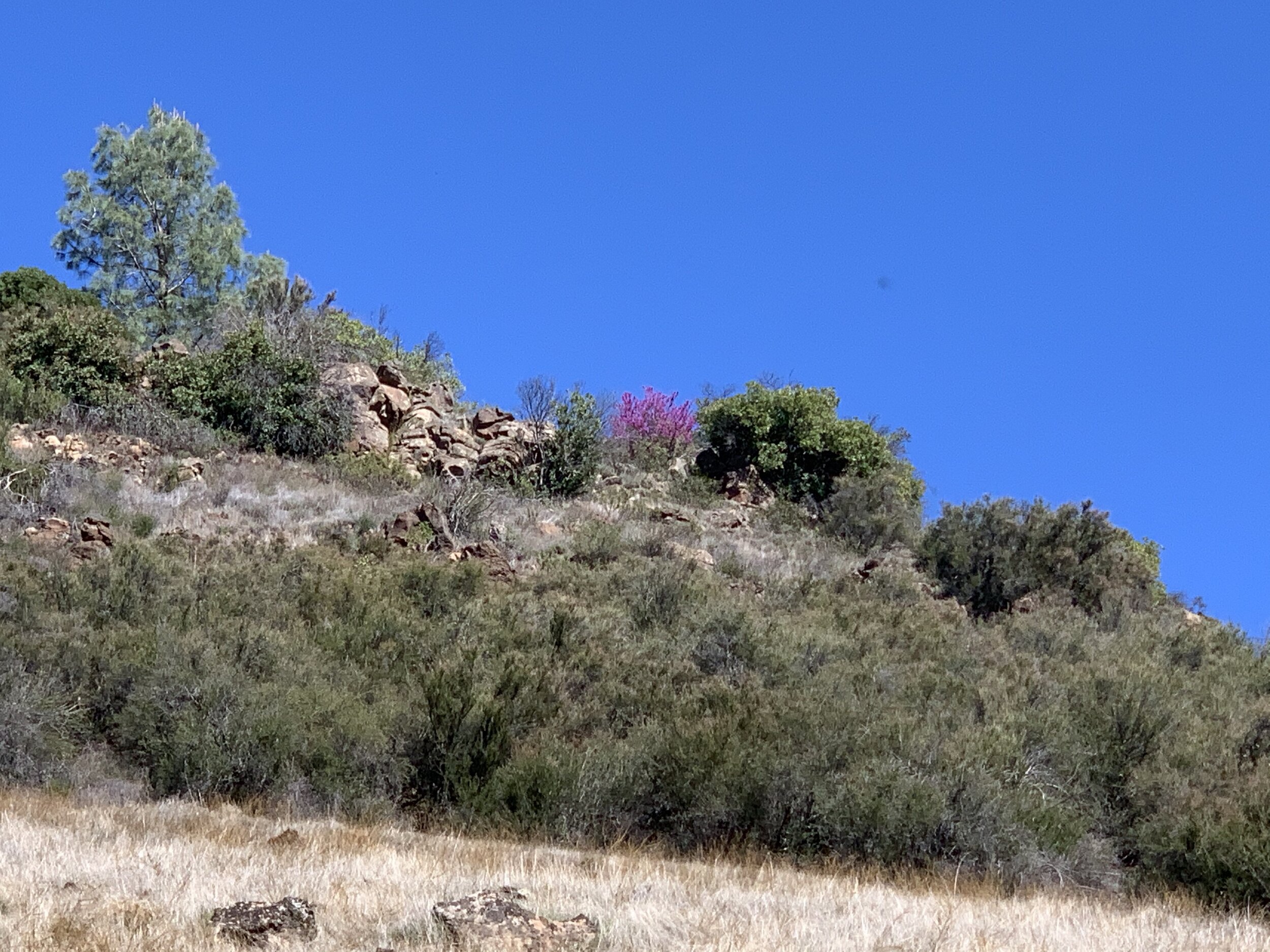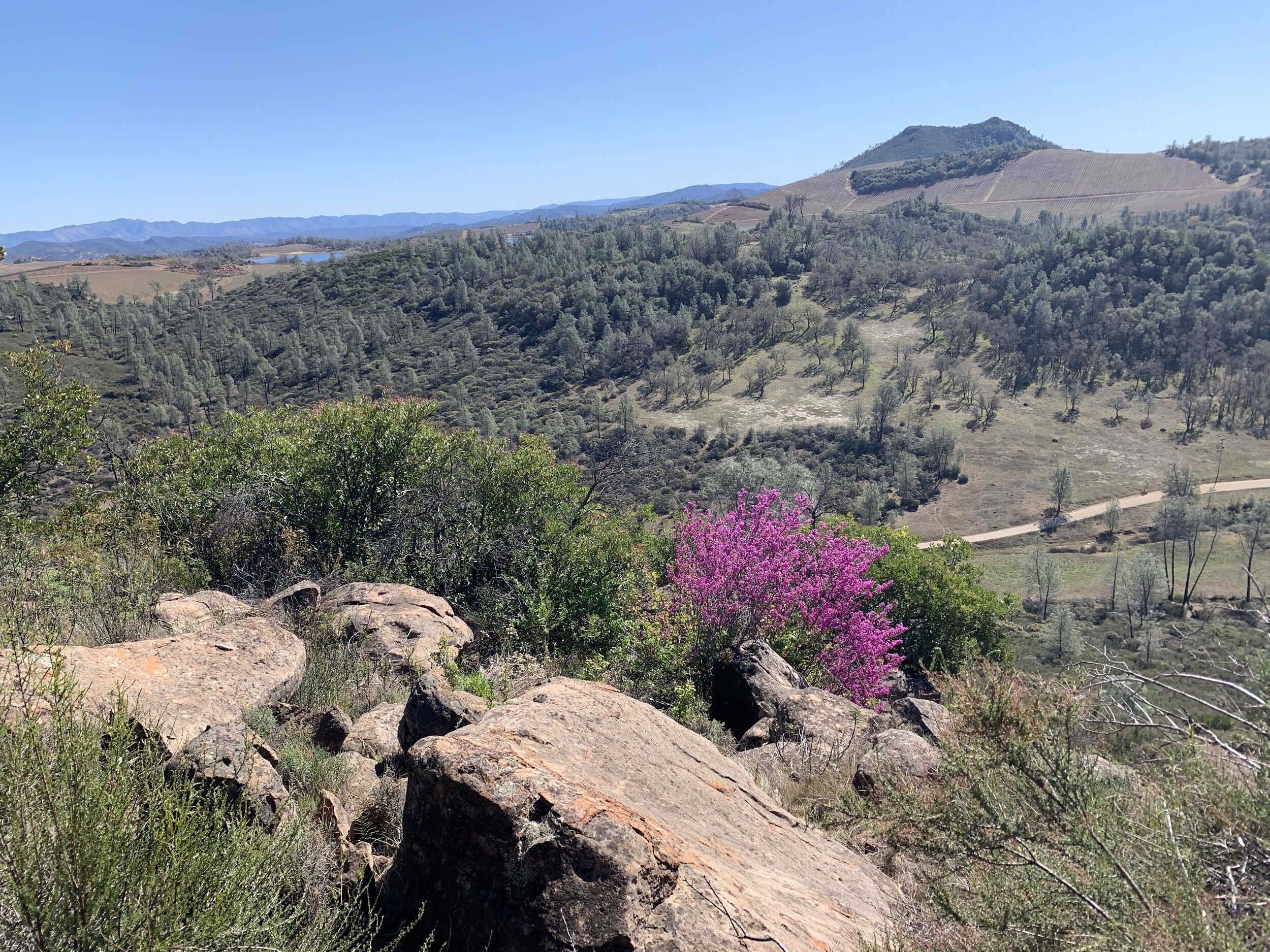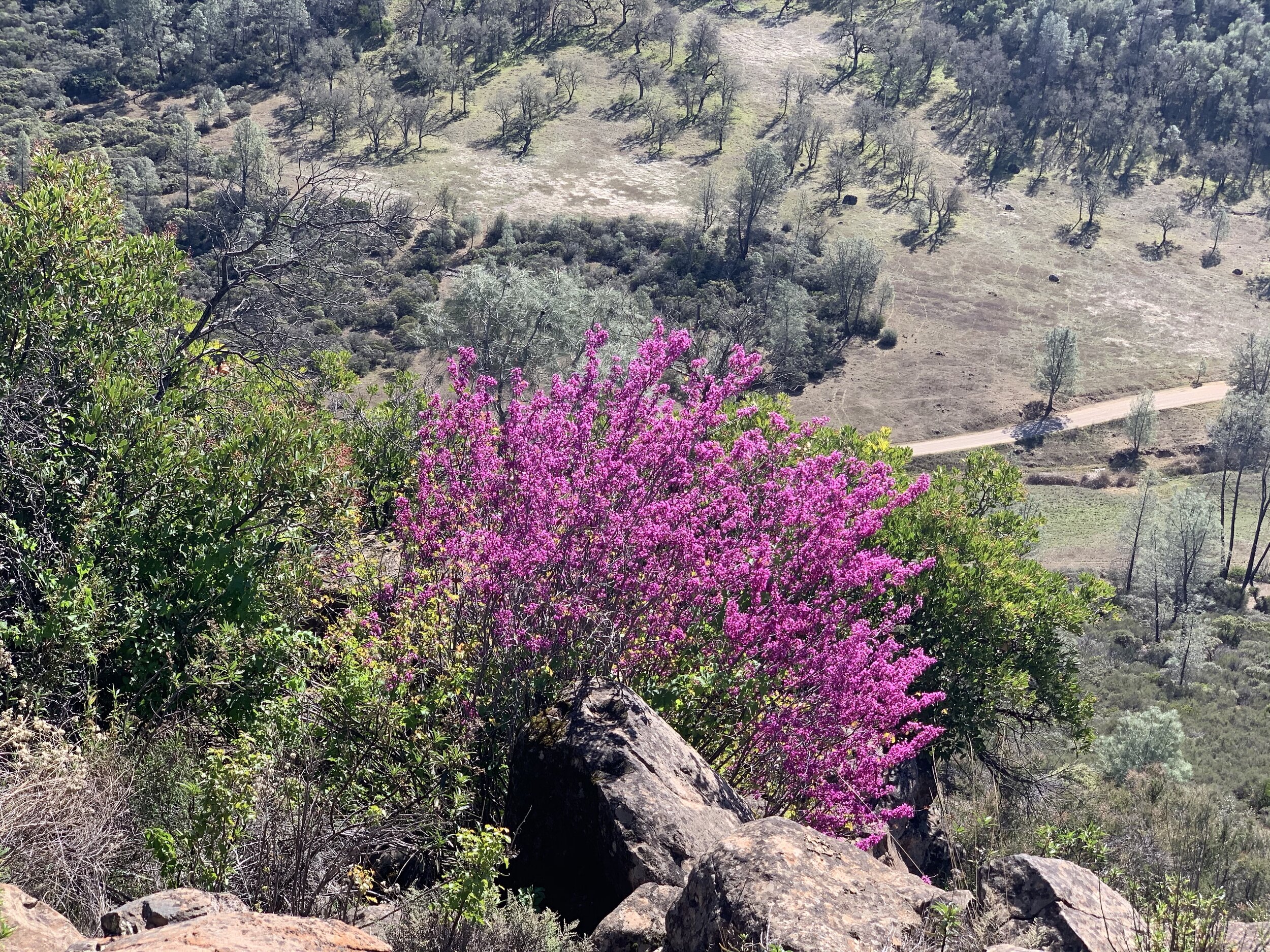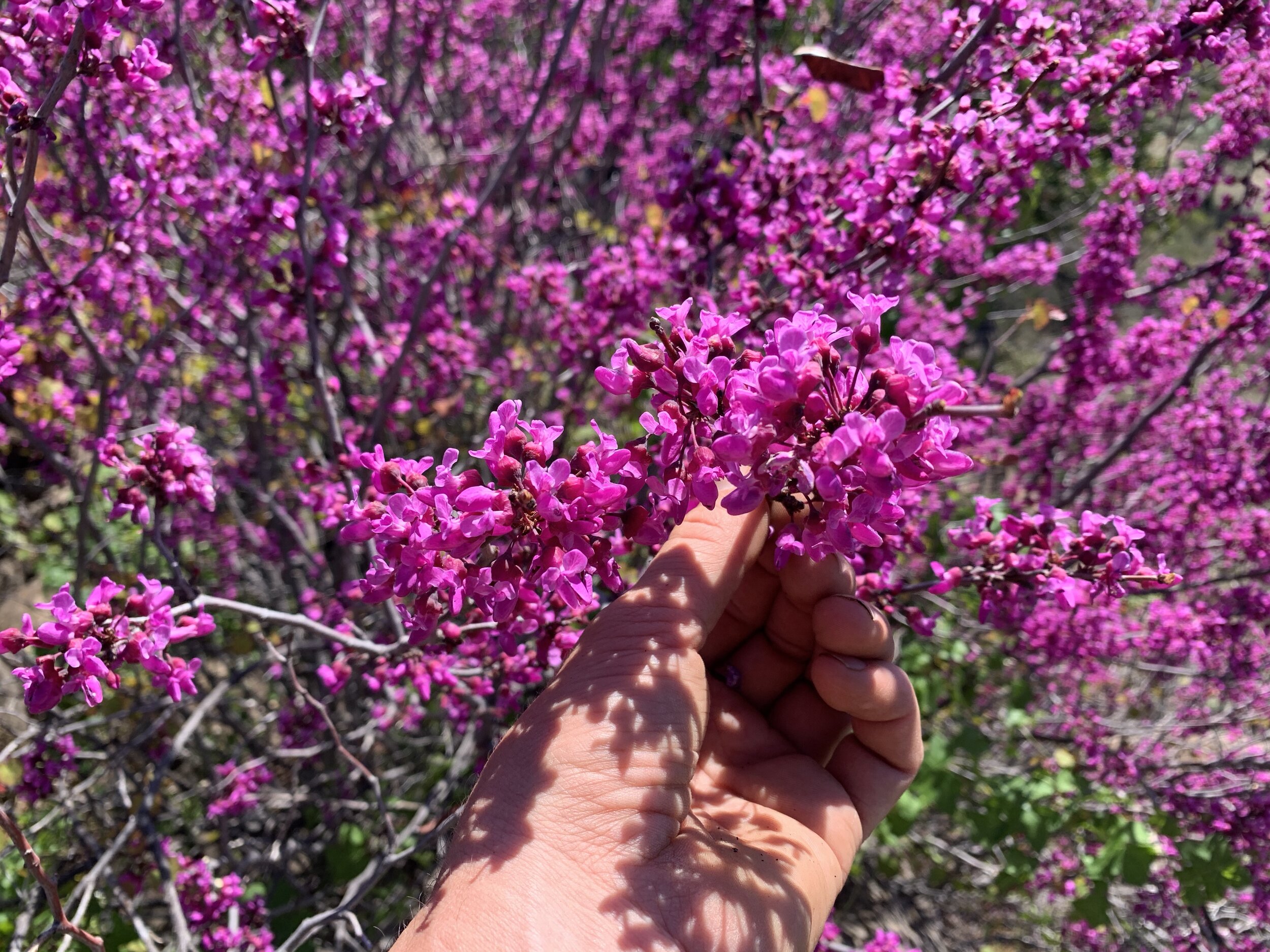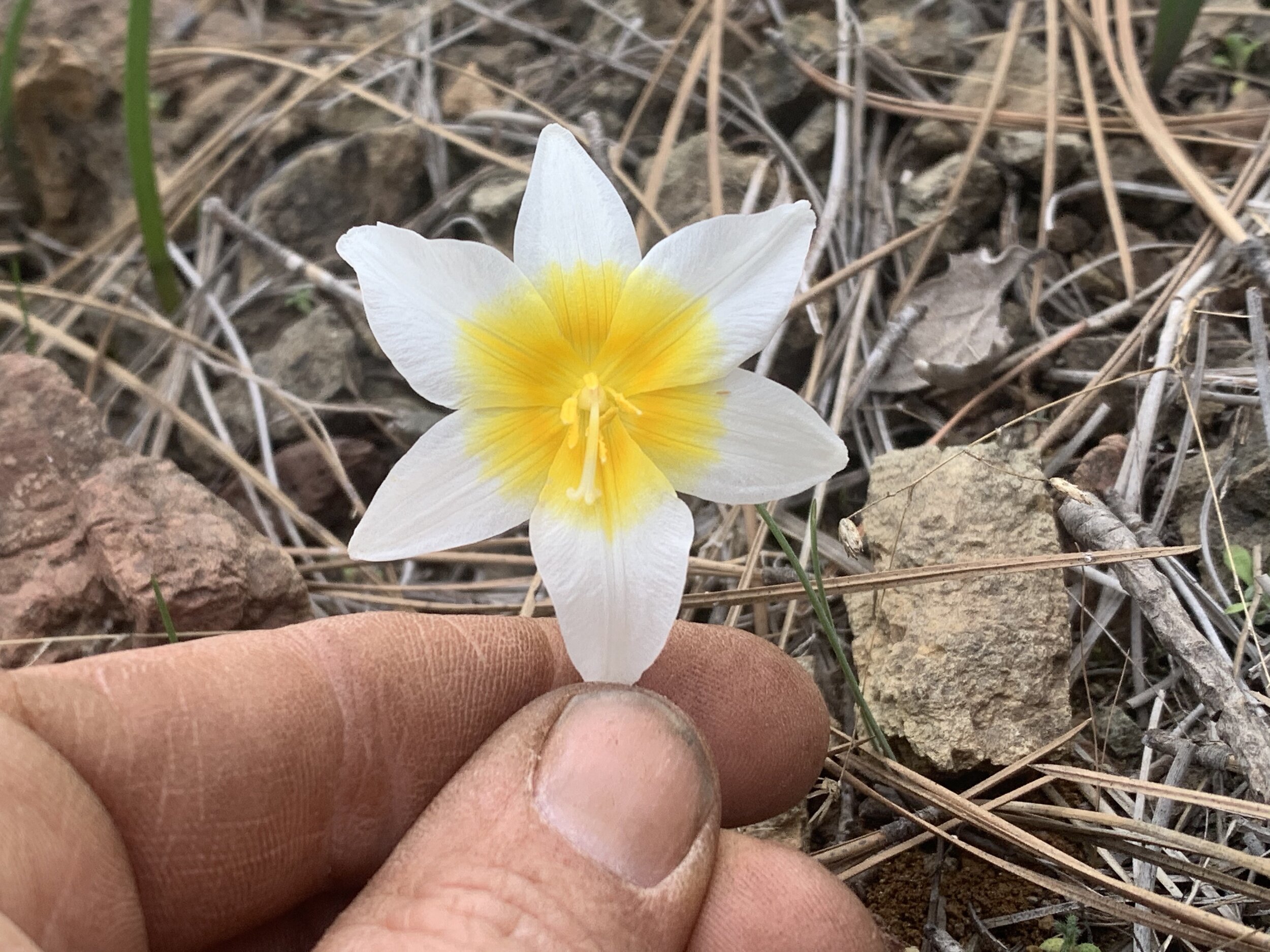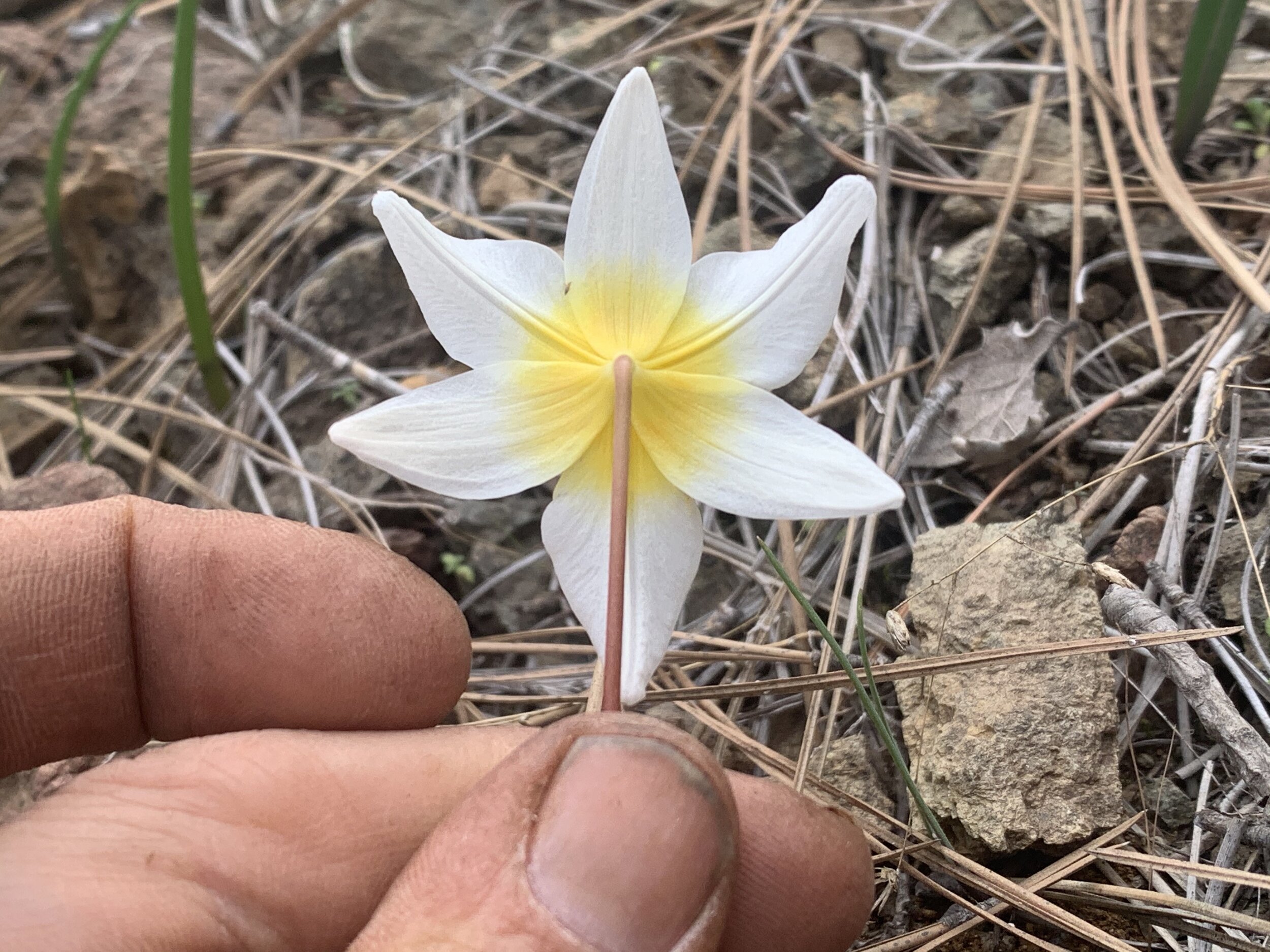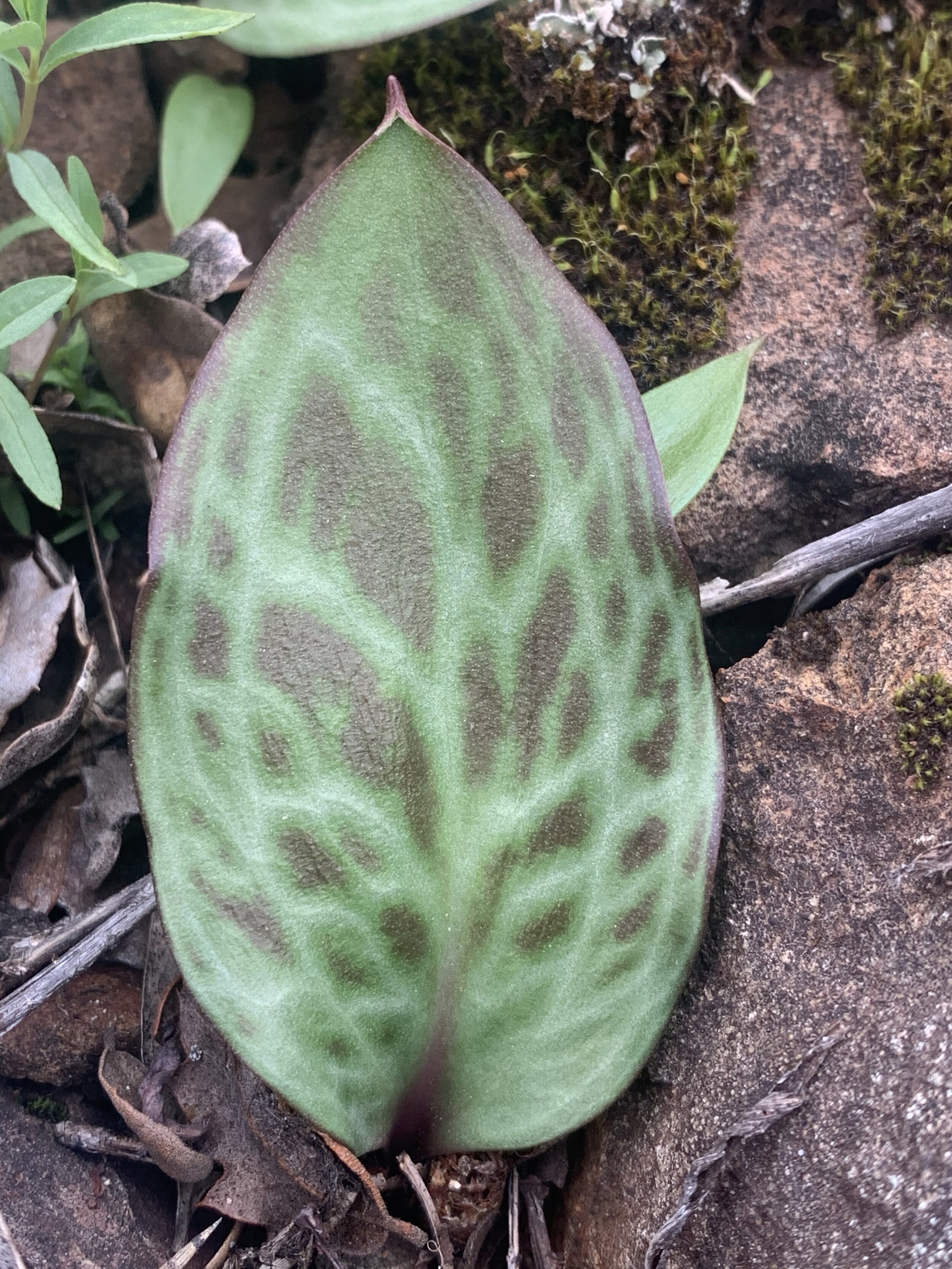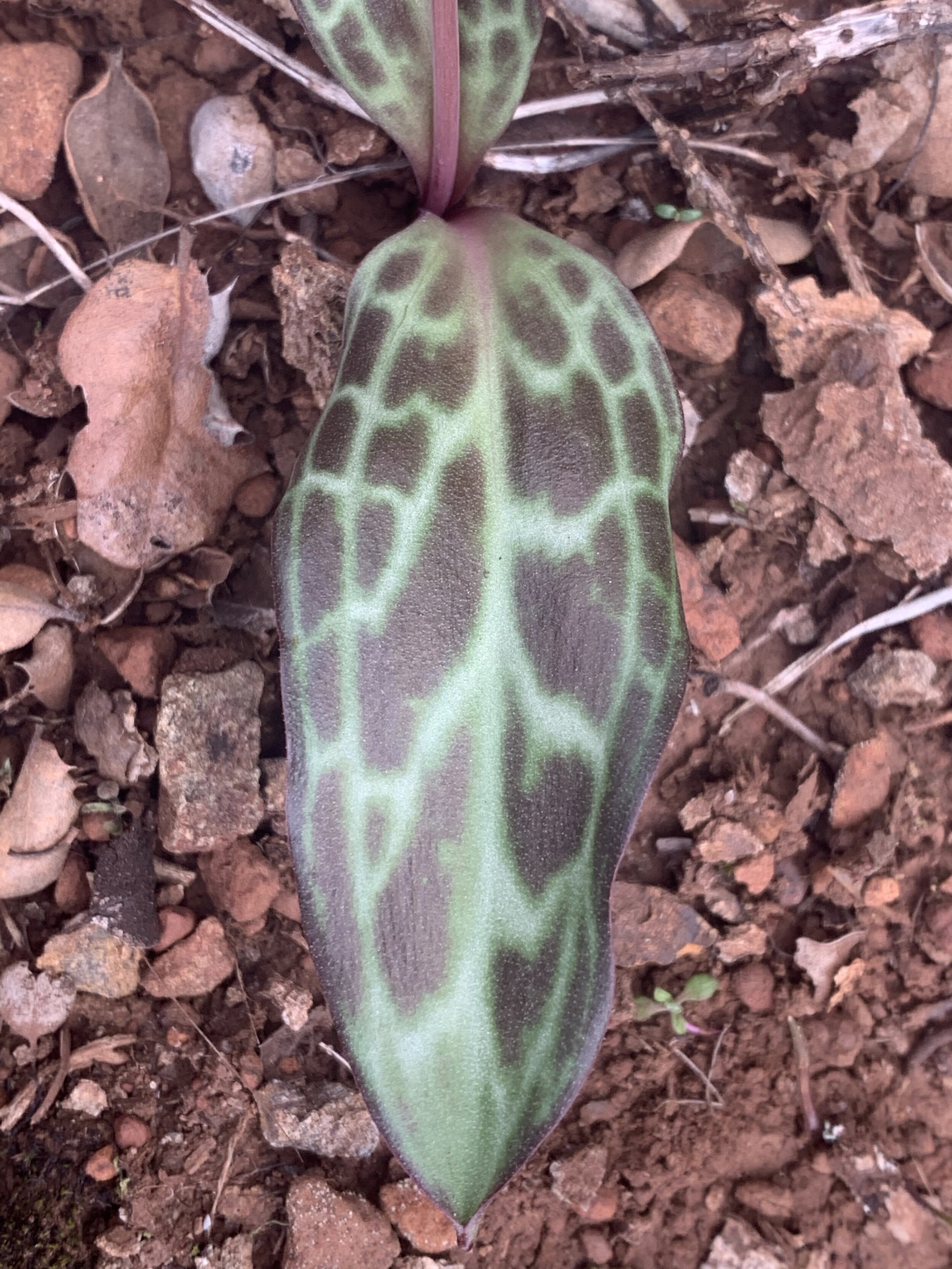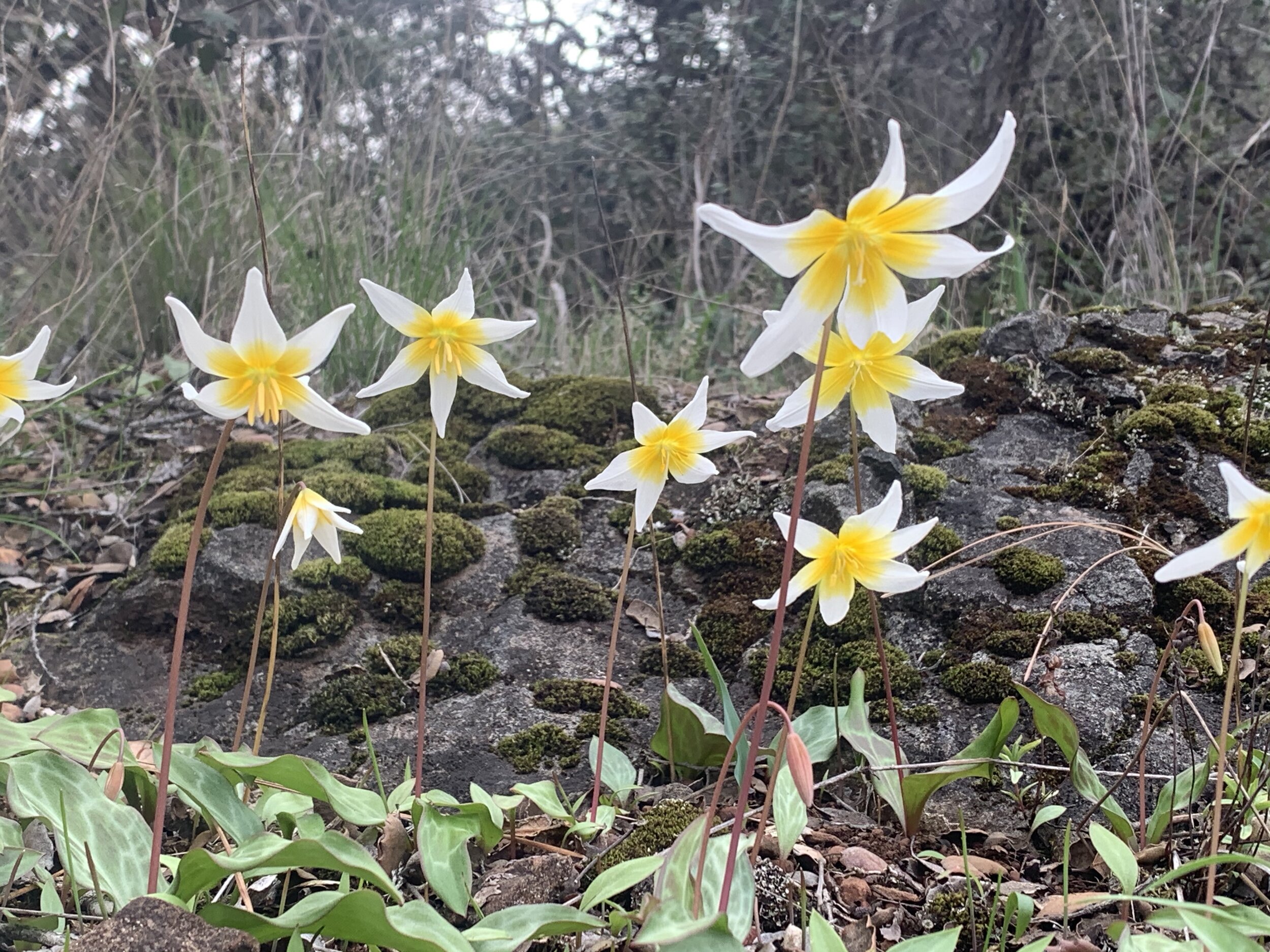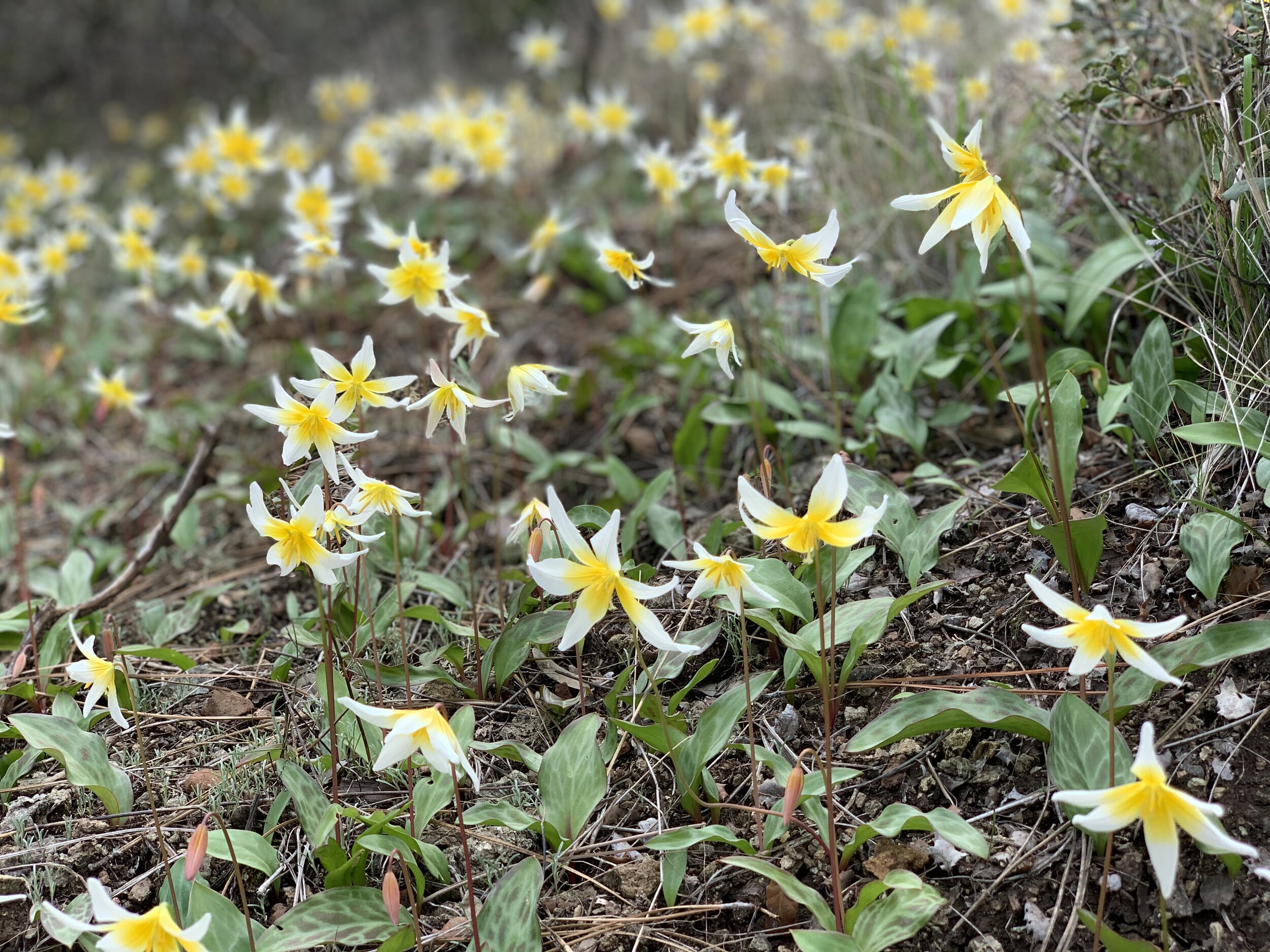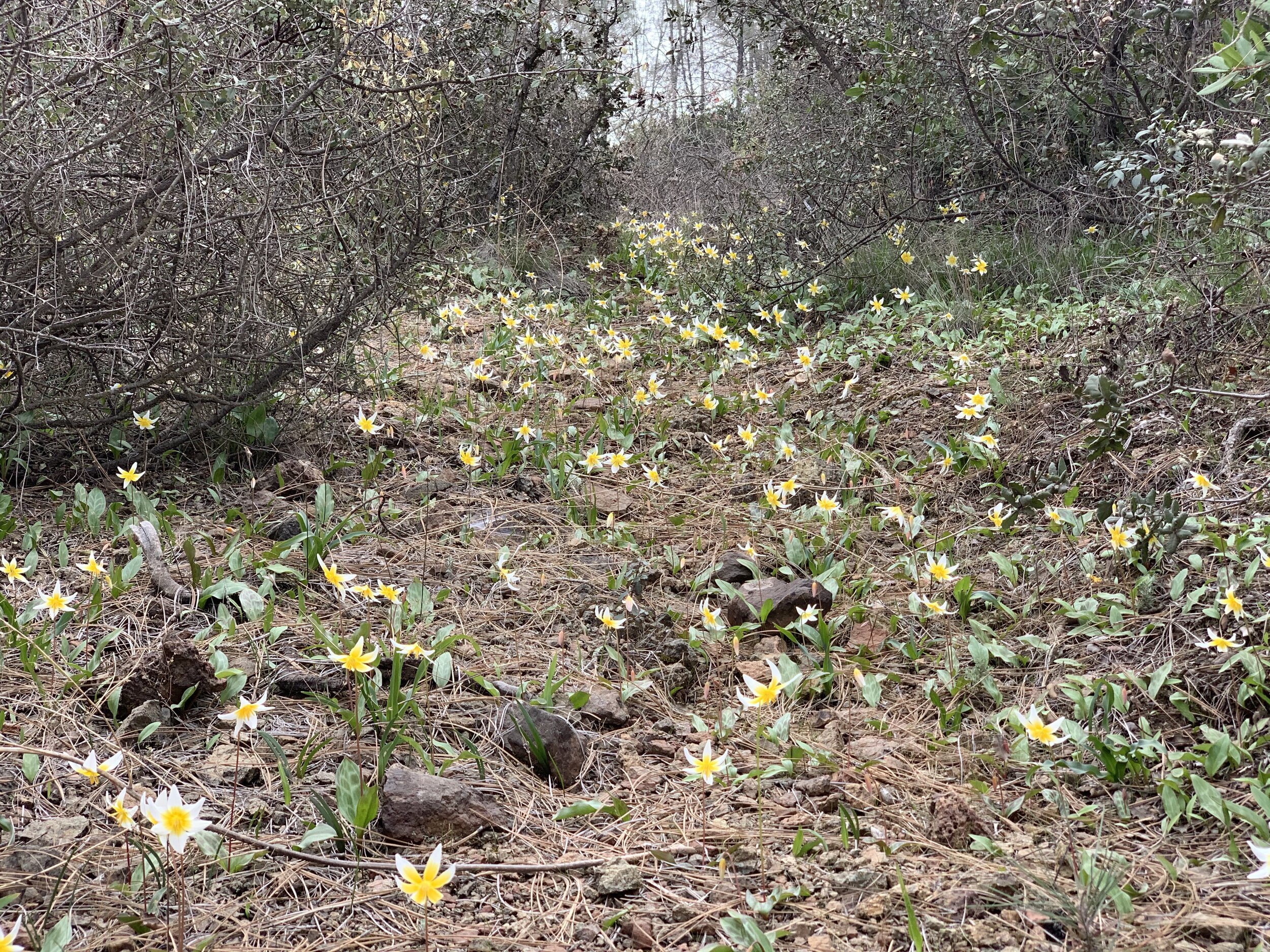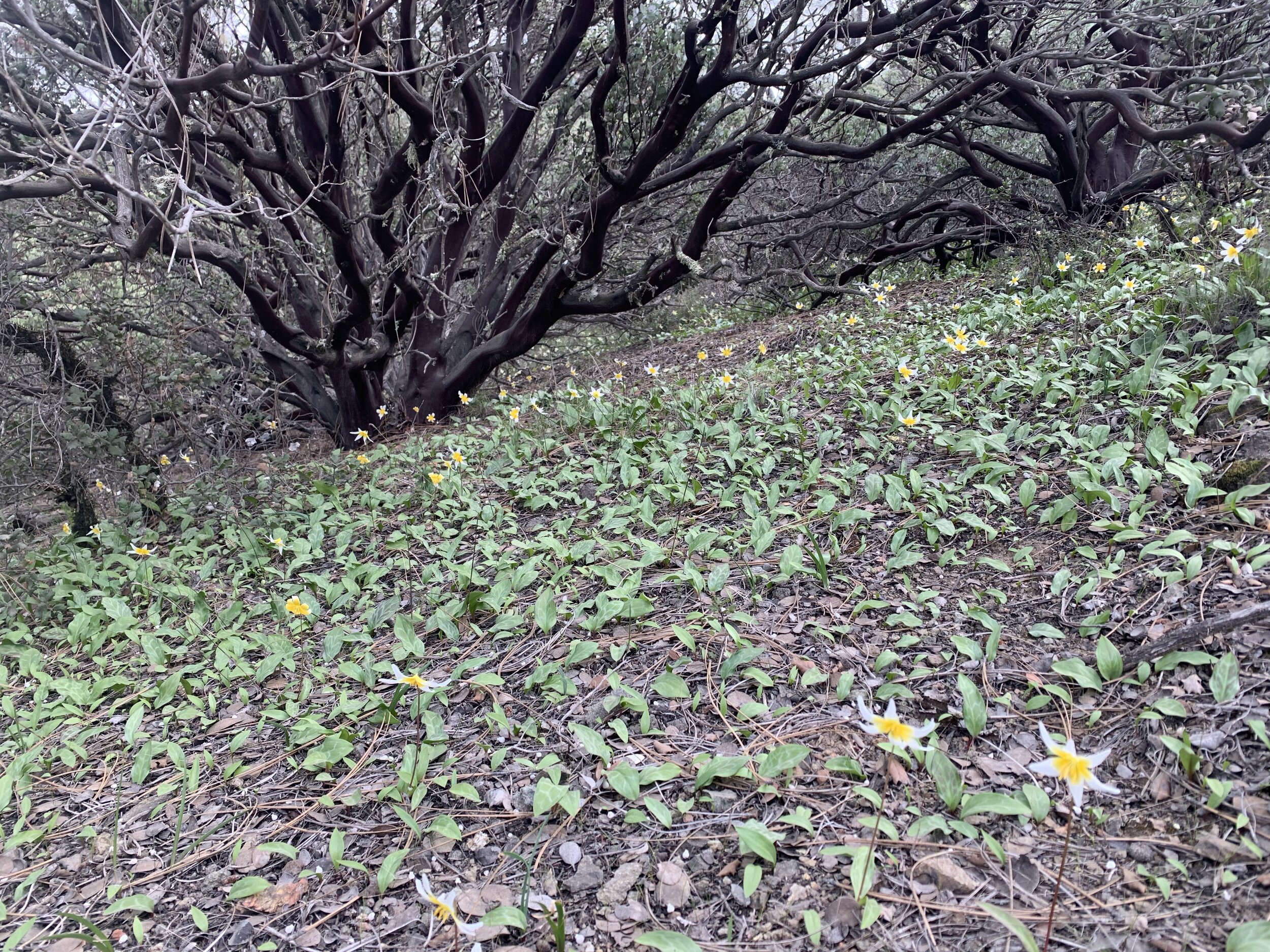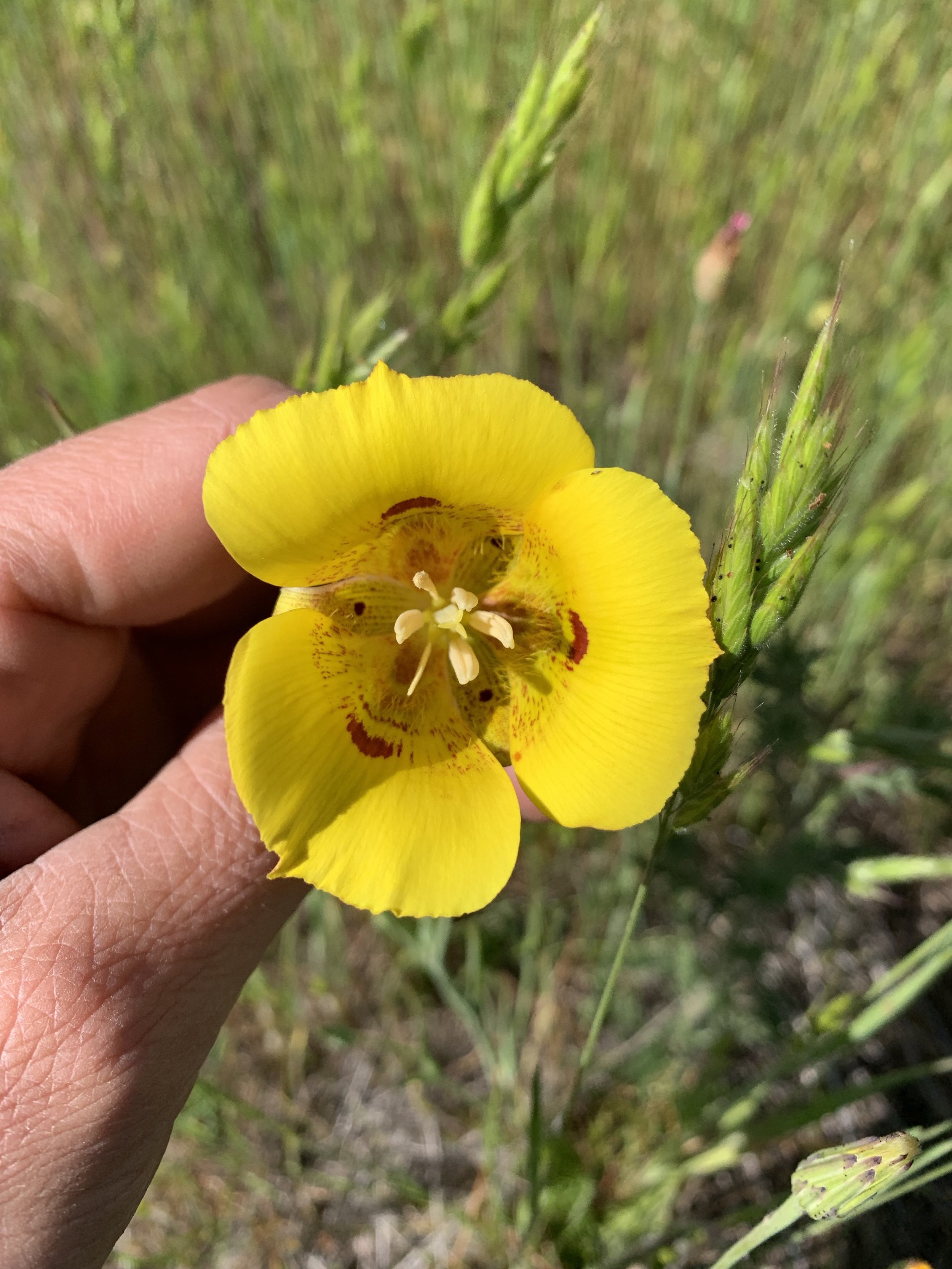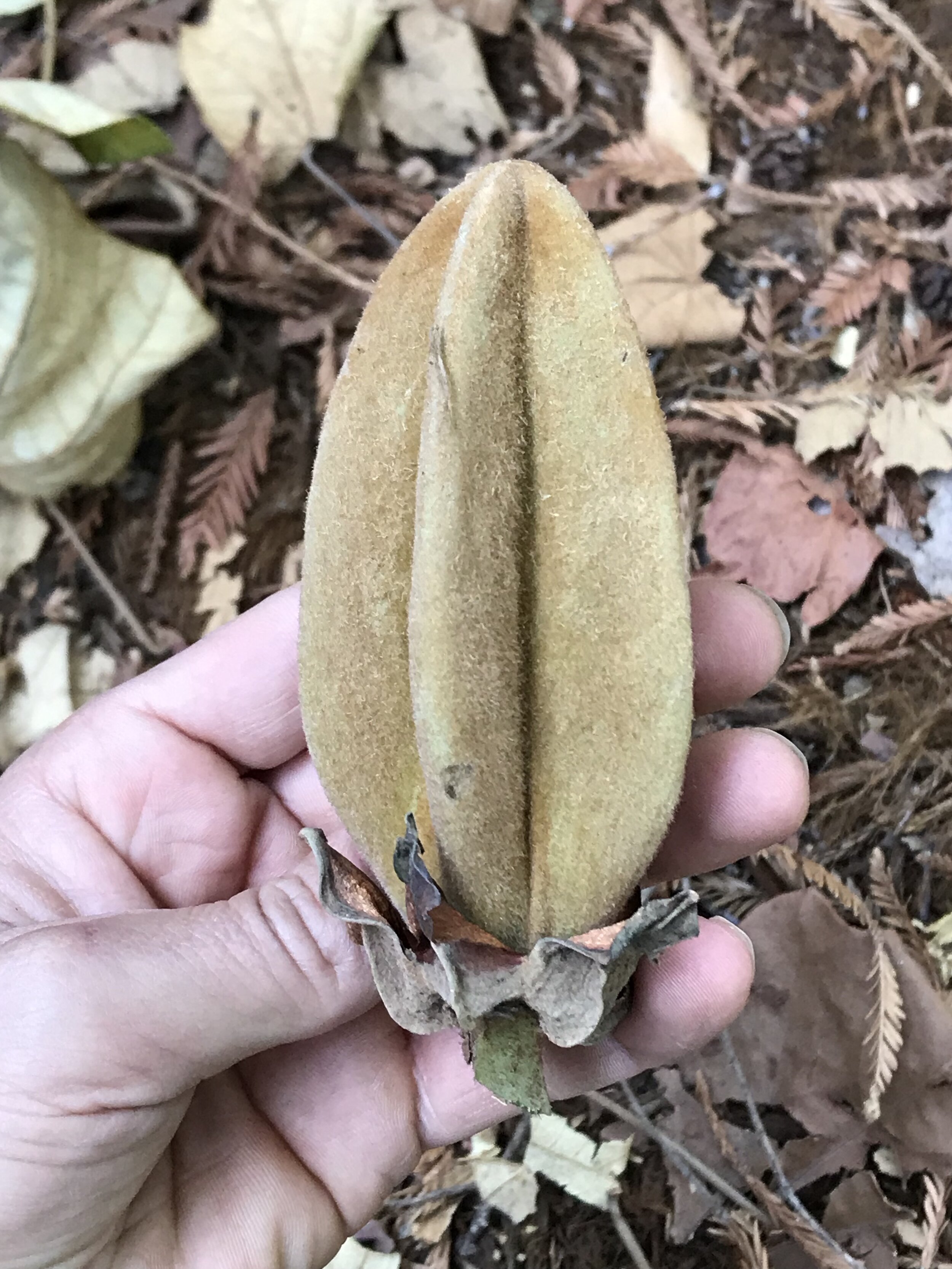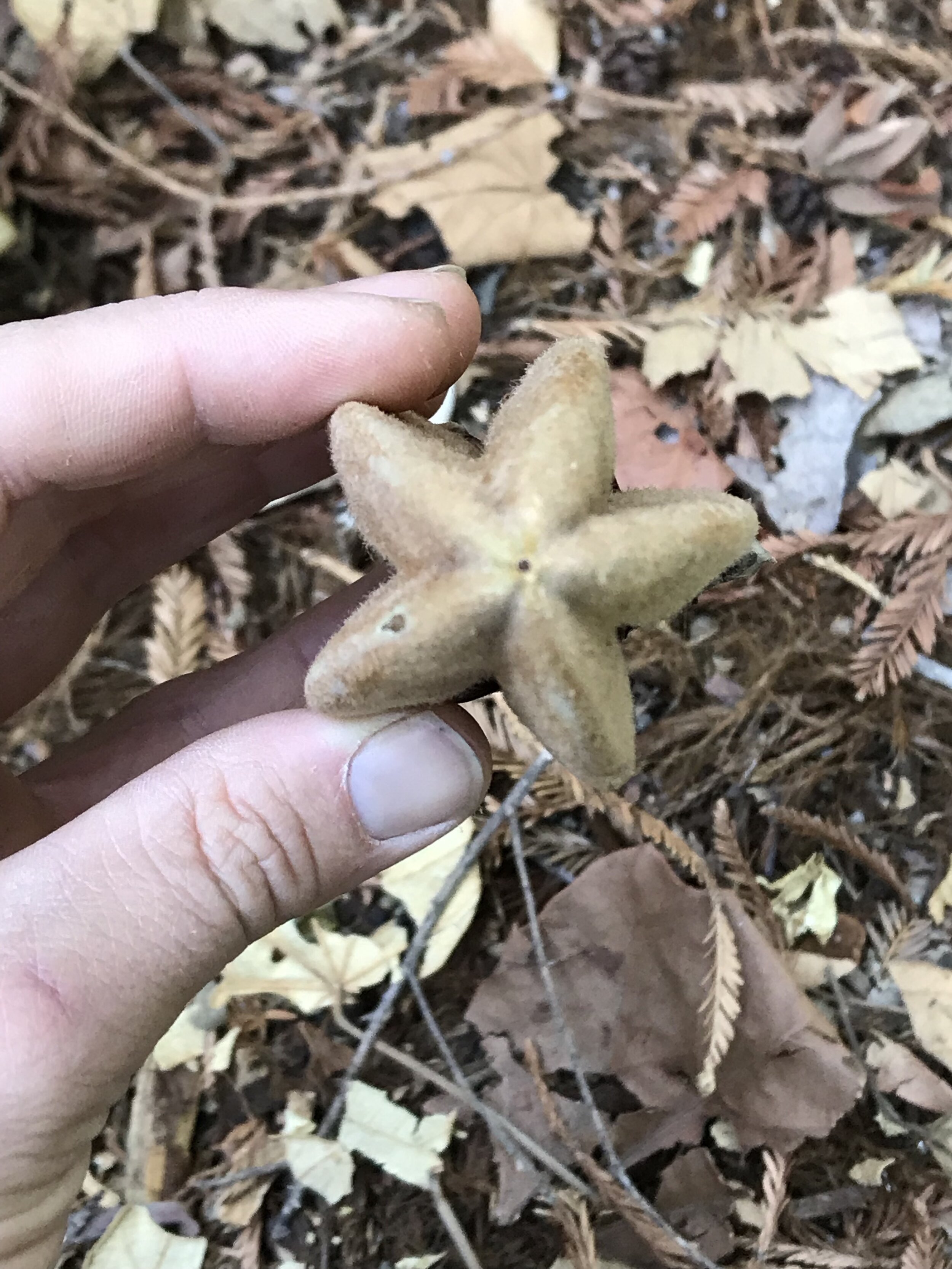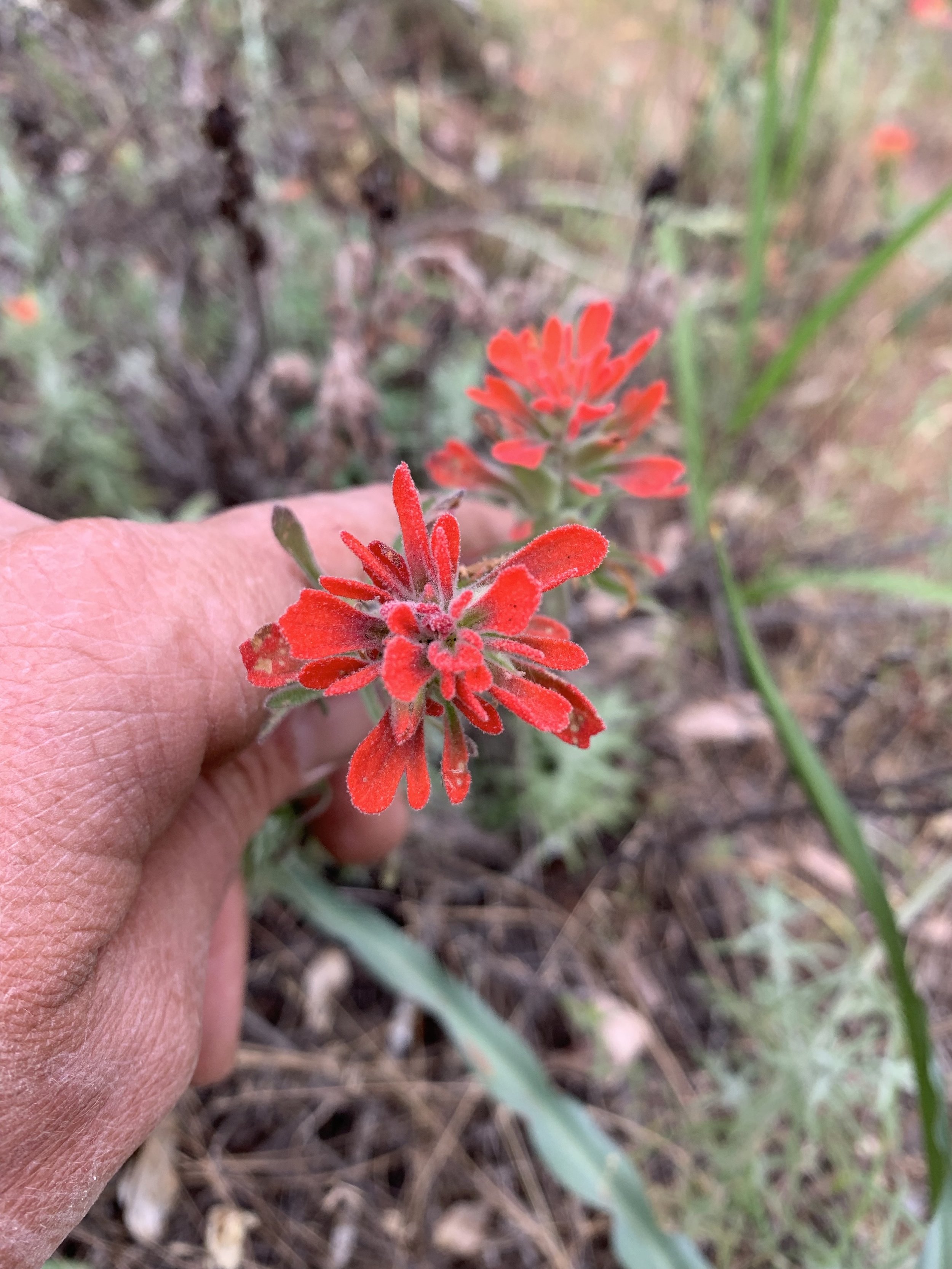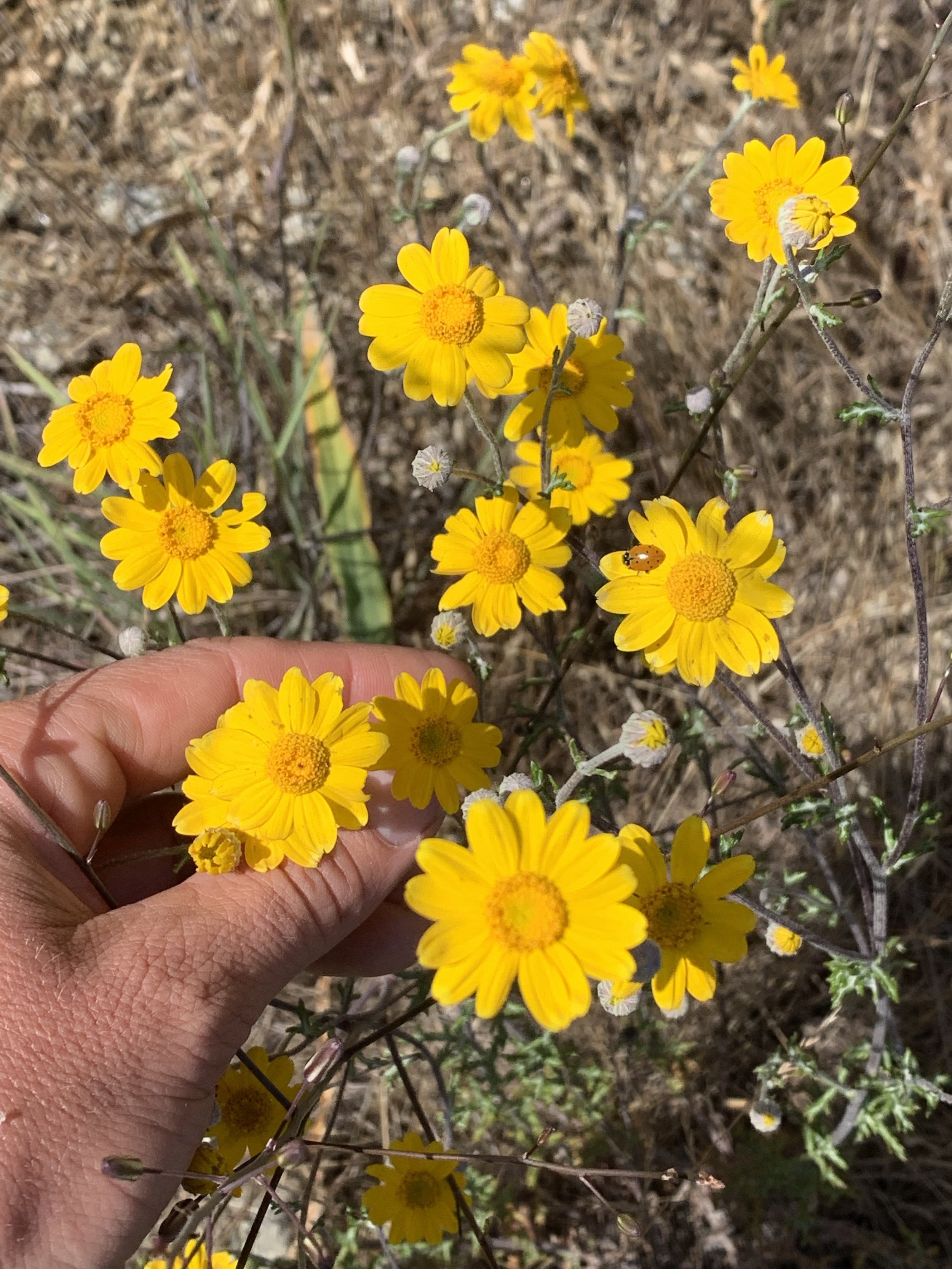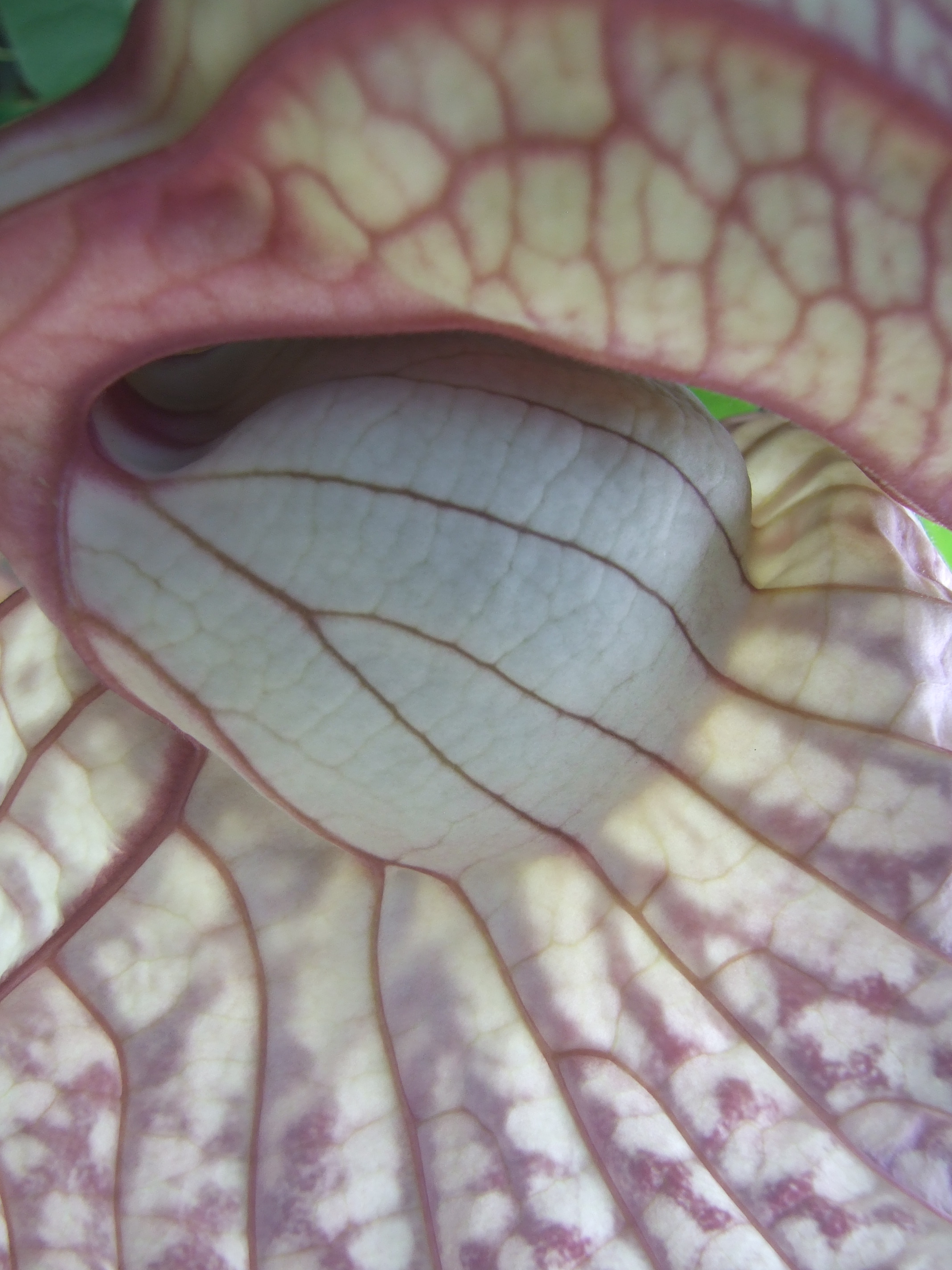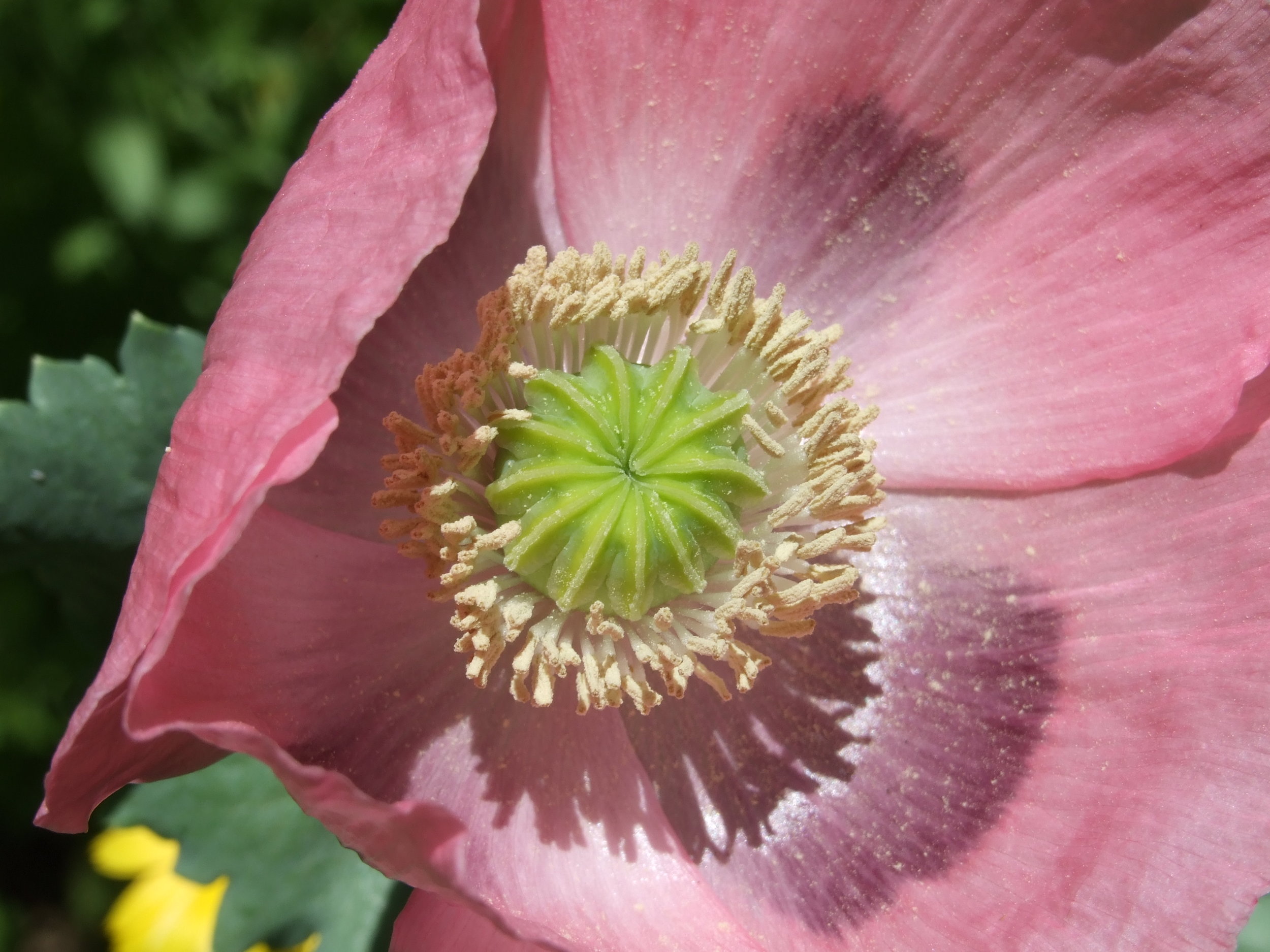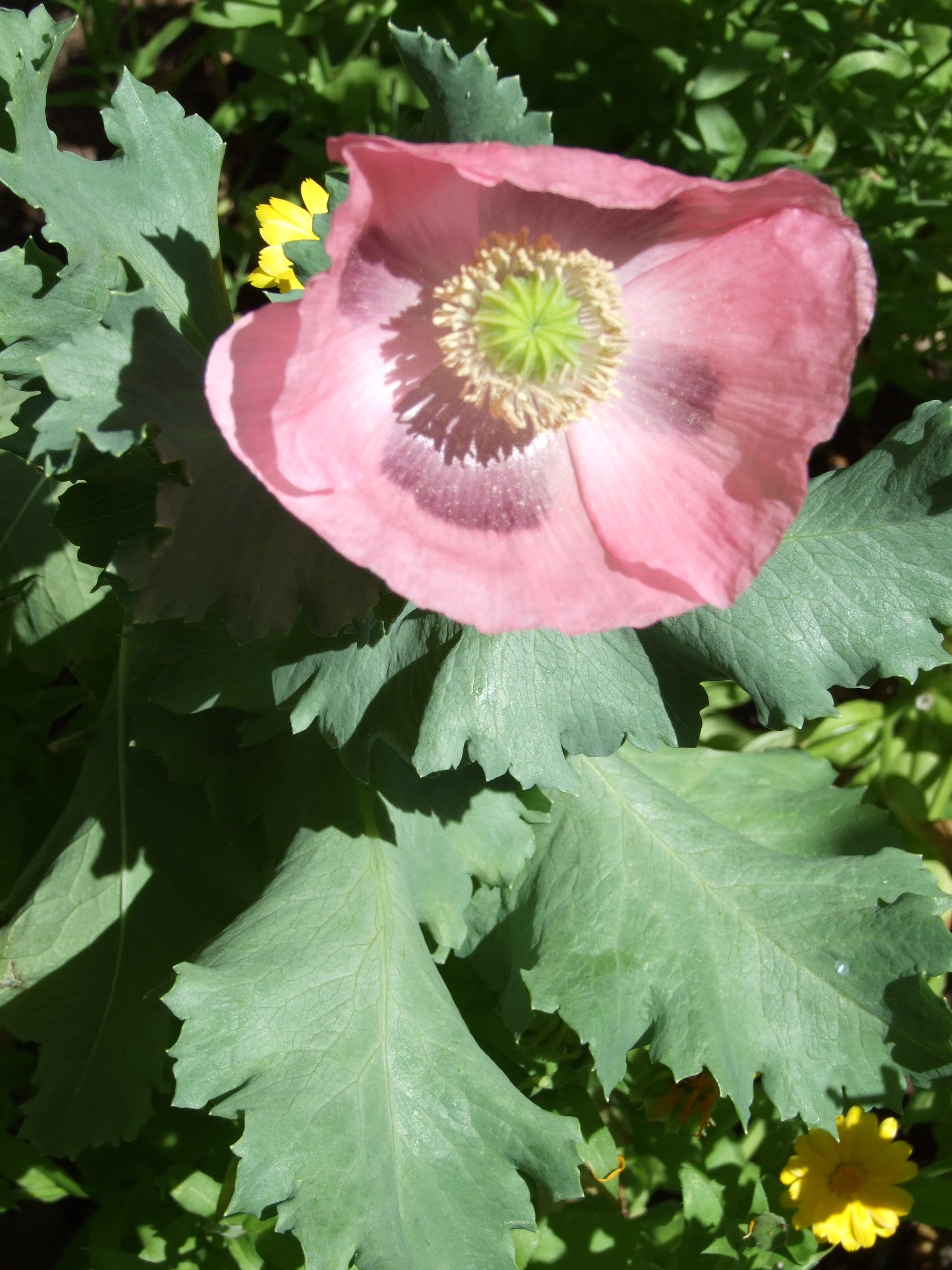Red bud blooming in end of February / early March of this year. Seeing the shock of pink from a distance I hiked up to check this one out. A truly spectacular spring blooming native shrub. The blooming plant is covered in numerous kinds of bees and insects.
Erythronium oregonum - California Fawn Lily
Erythronium californium is a herbaceous perennial bulb native to Northern California. I took these photos in Lake County where the highly scented flowers appear in full bloom at the end of February through March. numbering in the many thousands.
The bulbs, along with many other regional species, were an important food source for indigenous peoples. The bulb populations we see today are remnants of previously managed and far more extensive traditional food and land management systems.
The area depicted in these photos consists of semi-dense chaparral consisting primarily of Manzanita, Heteromeles, and Quercus (duration) along with Umbellaria californica, CThe Erythronium appears in profusion, as shown below, in the understory. The bulb seems to co-exist along side a healthy gopher population, which, reportedly, can aid in the dissemination of bulblets .
Other important genera of edible neophytes widely consumed in pre-contact California include Allium, Brodiaea, Camassia, Chlorogalum, Calochortus, Dichelostemma, Lilium, Lomatium, Perideridia, Sanicula, and Triteleia.
Aesculus California (Ca Buckeye) late winter bud
California Buckeye are one of the first deciduous trees to leaf out in late winter / early spring. This is a photo of a swollen bud, close to flushing out.
Calochortus luteus
Chiranthodendron pentadactylon almost ripe fruit / seedpod
The first seedpods are developing on a five year old Chiranthodendron pentadactylon tree I grew from seed.
Asclepias fascicularis - Narrow-leaf milkweed
Below are photos of the spectacular flower and thin leaf of Asclepias fascicularis, the narrow-leaf milkweed. This species, and others in its genus, is a specific monarch butterfly food and habitat plant. Planting milkweeds and helping to support their populations can aid in creating habitat for the dwindling populations of monarch butterfly.
Narrow-leaf milkweed flower and bud at varying stages.
Narrow leaf milkweed leaf and unopened flower (bud).
Some California wildflowers - Spring 2019
Mimulus gluttatus flower
Mimulus aurantiacus flower
Clarkia concinna - Red Ribbons
Castilleja spp. - Broom-rape Family
Calochortus vestae - Coast Range Mariposa Lily
Helianthella California?
Calochortus lutes (yellow) and C. vestae (white).
Eriodictyon californicum, Yerba Santa
Capparis spinosa - Ionian Sea, Greece
Capparis spinosa growing in its natural habitat, on the limestone coastal cliffs in Kefalonia, Greece.
Aristolochia grandiflora
Aristolochia grandiflora detail.
Papaver somniferum - Opium Poppy, ying su, ya pian (Chinese), kas kas (Malay), Adormidera (Spanish)
The opium poppy is an erect annual herb, growing up to a meter and a half in height with large hairless, almost grayish-green, serrated leaves. The large flowers are solitary, born on slender stalks, with large papery petals, as can be observed in the photos below. The seedheads have a very distinctive appearance, not unlike that of a saltshaker.
The opium poppy is a cultigen of unknown origin, believed to be indigenous to southwestern Asia. Really, it can not be said with certitude where its original home was. Poppy seeds have been found during excavations of 4,000 + year-old lake dwellings in Switzerland. Today it can be found cultivated throughout the world, especially in areas of Asia, Europe, North Africa, and the Americas. It is primarily propagated for the extraction of opium, from which a number of pharmaceutical and narcotic drugs are derived, such as heroin, codeine, and morphine, among others. Poppy seeds, a common condiment, can also be harvested from the ripe pods.
It is still not known whether the plant was first cultivated as an edible seed for the opium it provides. Both the seeds and sap were used for their remedial properties as early as 2,500 B.C. Assyrian medical texts refer to the opium poppy as "the plant of joy."
Throughout history it seems the plant has always been cultivated and consumed for both medicinal and hedonistic purposes.
Opium is legally produced in India and Turkey, while poppy seeds and poppy seed oil comes mainly from Europe, the Middle East, and India. The seeds contain no alkaloids.
For household medicinal applications, an infusion can be made from the mature seed pods. A typical dose amounts to around five grams of seed pod per half liter of water. The infusion possesses calmative and narcotic properties. For insomnia one can drink half a glass of opium poppyhead tea about a half an hour before going to sleep. To calm stomach pains and colic a half glass can be consumed every half hour. This same infusion is excellent to alleviate and combat cough, fever, and numerous ailments associated with the chest and lungs.
The dose can be amplified when used to calm chronic toothache, and inflammations of the mouth and throat.
Opium is derived from the milky sap exuded from mature seedheads when nicked or cut. Dioscorides provided a concise explanation of the procedure: Those who wish to obtain the sap must, after the dew has dried, go around the little star with a knife in such a way that this does not penetrate to the interior, and superficially incise the capsule in a straight direction on the sides, then smear the emerging tears with the fingers into a shell, and go back again after not too long a time, for it will have thickened and the next day it will be found like this as well. You must then knead it in a n old mortar, shape it in to lozenges and store it." (Book IV, Ch. 65)
The seed capsule can be cut either horizontally or vertically (both methods are practiced). The exuded sap can be collected numerous times daily, although traditionally seedheads are cut in the evening and the sap gathered the next morning. The milky sap dries to a brown color, this is raw opium. This is often collected with a special curved knife, which is also used to make incisions in the poppyhead. Raw opium is typically rendered to a more concentrated state by adding water and applying heat, thereby reducing the syrupy mass.
It is almost impossible to fathom just how significant a role Papaver somniferum has played in the course of human evolution.
The plant was highly regarded in ancient Greece, opium was not only the best and most frequently used medicines, but used in a wide variety of cultic contexts, also associated with many gods. IT is likely that the brown juice of the poppy (opium base) was employed in the initiatory drink of the Elusinian mysteries, thought to have been a major ingredient into what sounds like a particularly powerful drink, including ergot (Claviceps purpurea) and pennyroyal (Mentha pudegium).
Opium has always been revered as a potent aphrodisiac. The first source from the Ayurvedic system of medicine to list opium as a remedy is from Sarngadhara Sambita in the thirteenth century.Sarngdhara describes in some detail an opium containing powder called "akarakarabhadi chruna", which he lists as an aphrodisiac.
The recipe is as follows:
1 part aharakara (Anacyclus pyrethrum)
1 part sunthi (ginger; Zingiber officinale)
1 part kankila (Piper cubeba)
1 part kesara (Mallothus philippinensis)
1 part pippali (long pepper; Piper longum)
1 part jatiphala (nutmeg; Myristica fragrans)
1 part lavanga (clove; Carophyllus)
1 part candana (sandalwood; Santalum album)
4 parts ahiphena (opium; Papaver somniferum)
The dose was suggested at apprx. 300 mg.
In addition to its common use as an aphrodisiac. Opium was also frequently combined with hemp products and nightshades and consecrated to Shiva.
The Rajputs used opium combined with olibanum (frankincense resin), cumin (Cuminum cyminum), and pureed fruit. This mixture is said to have been a popular aphrodisiac in the day.
Opium is a better aphrodisiac when eaten. To be smoked, raw opium must be changed into smoking opium, which involves a somewhat involved process.
There are a number of books on the natural history of opium, all of which include a much more extensive history.

